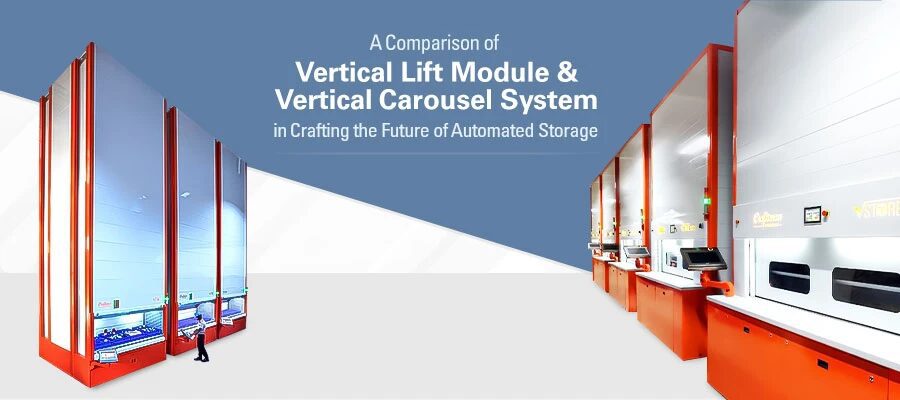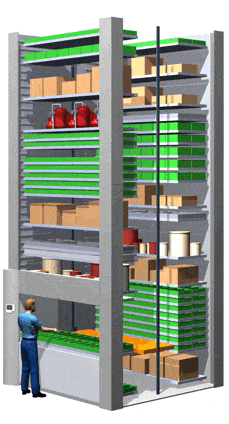
Vertical Modules and Vertical Carousels are two types of Automated storage solutions that are a great investment for businesses looking to improve their storage and retrieval management. Plus these systems also open up the scope of storing inventories vertically than horizontally. Without human interference, you won’t have to worry about storing more items in one place.
Since there are numerous storage systems you might want to consider investing in, they come under two categories: Vertical Lift Module/Vertical Lift Machines(VLM) and Vertical Carousels. Here we are going to focus on both their similarities and differences to help you determine which one would be best for you.
As two kinds of goods to person automated vertical carousel and vertical lift machine, both provides:

The vertical lift module consists of two tray columns with a mechanical extractor located in the centre. The extractor travels up and down between the trays and automatically locating the products based on the requirement. This machine is like an elevator with doors that can open both at the front and back.

They are built with a series of tray-like carriers that fixed in fixed locations to a chain drive. The movement of the vertical carousel machine is controlled or powered with a motor that sends the carriers in a vertical looping pattern. They can move both forward or reverse motion exactly like a Ferris wheel.
Both of the technologies roughly span at the same width. There is no notable difference. But when it comes to depth, vertical lift machines can be twice as deep as vertical carousels. This in turn gives vertical carousels an overall narrower footprint.
Vertical lift modules start at 8 feet tall and can be installed for a height of 98 feet. On the other hand, vertical carousels can start at a shorter height at just 7 feet and reach up to 32 feet tall.
Although both of these machines can reach up to your ceiling, it is not necessary that they have to be tall like they should be. It can be concluded that the taller the machine the slower is their operations. So this is completely up to you to determine the right height to create a balance between its operations and objectives (space-saving).
The upgraded version of automated vertical carousels available in Australia can handle up to 1430 pounds per carrier. Whereas VLMs can be fitted with special trays that can handle load up to 2200 pounds each.
The only major difference between the two machines is: Vertical carousels are difficult to fit with cranes and ergonomic lifts. So if you are planning to store heavy items Vertical lift modules are the best choice for you.
Due to extreme similarities in their construction, mode of operation, and purpose VLMS and vertical carousels are ideal for various applications. However, when you are selecting which system would be right for you, keeping these in mind can help you.
While determining the best material handling both these machines are best in their own terms. However, choosing them according to your individual preference can be tricky. With the above-mentioned differences between the two storage systems, now choosing your automated storage solution is no rocket science.